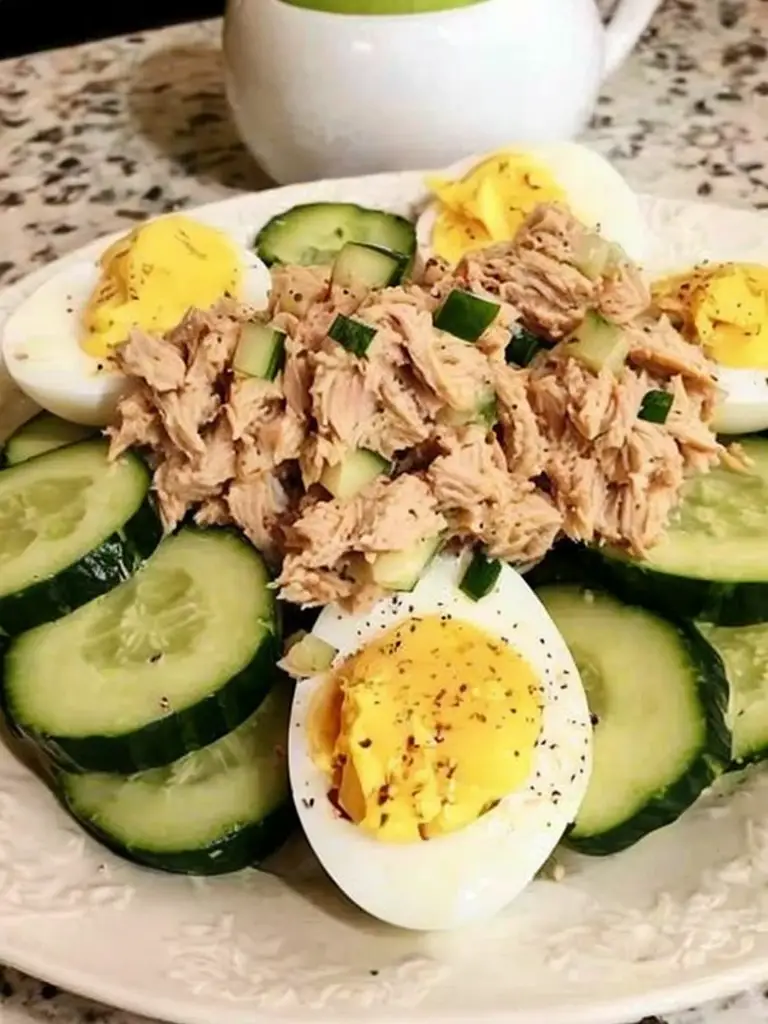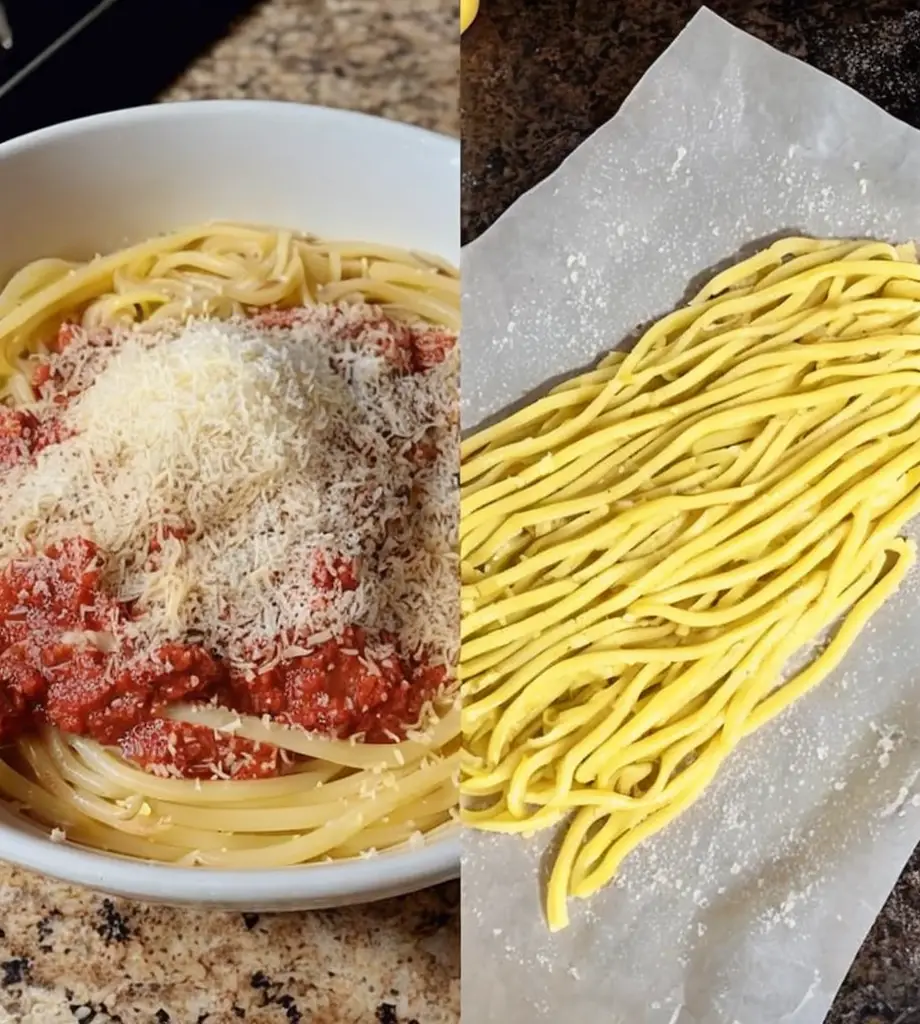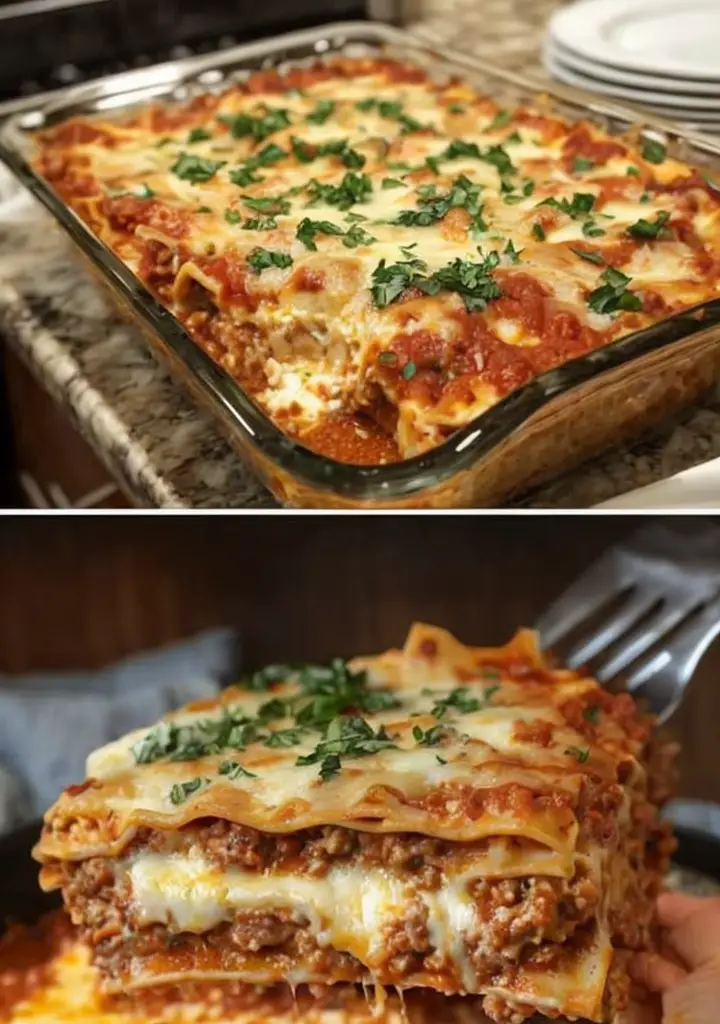Cheesy Bread: A Delightful and Melty Experience
Cheesy Bread is the epitome of comfort food, featuring a warm, golden crust that encases an irresistible layer of gooey cheese. This dish is perfect for sharing or enjoying alone while cozying up with a good book or a movie. The moment you take a bite, the melty cheese stretches deliciously, and the aroma of baked bread fills the air, inviting everyone to gather around.
The combination of simple ingredients transforms into something extraordinary with Cheesy Bread. Whether served as an appetizer at a family gathering or a delicious side to your favorite pasta, this delightful bread never fails to impress. The rich, buttery flavor combined with the savory cheese creates a symphony of taste that’s hard to resist.
Quick Recipe Highlights
- Flavor Profile: Cheesy Bread features a harmonious blend of savory cheese and buttery bread, creating a mouthwatering treat.
- Texture: The outside is crispy and golden, while the inside remains soft and gooey with melted cheese.
- Aroma: The scent of warm, freshly baked bread mixed with dairy delights invites you to take a bite.
- Visual Appeal: With its golden crust and bubbling cheese oozing out, this bread is as pleasing to the eyes as it is to the palate.
- Skill Level Needed: This easy recipe requires basic cooking skills and is perfect for novice bakers.
- Special Equipment: A baking sheet and parchment paper are essential for achieving that perfect crust.
Recipe Overview
- Difficulty Level: This easy recipe is accessible even for kitchen beginners, with straightforward steps and quick prep time.
- Category: Ideal as an appetizer, side dish, or even a snack, Cheesy Bread is versatile for any meal.
- Cuisine: Rooted in various culinary traditions, this dish is influenced by Italian focaccia and the beloved cheesy garlic bread styles.
- Cost: The ingredients are budget-friendly, making it an economical recipe that delivers big on flavor.
- Season: This recipe shines year-round, especially in fall and winter when comfort food is most sought after.
- Occasion: Cheesy Bread is a hit for casual gatherings, game day parties, or simply enjoying with family.
Why You’ll Love This Recipe
With its enchanting taste and satisfying texture, Cheesy Bread holds a special place in the hearts of many. It brings together a delightful mix of simple yet rich flavors that appeal to both young and old alike. The ooey-gooey cheese melds perfectly with the warm bread, harmonizing comfort with indulgence. The ease of preparation allows anyone to create this culinary masterpiece without breaking a sweat.
Convenience plays a major role in why this recipe is so cherished. A quick prep time of just ten minutes followed by only twenty minutes in the oven means that fresh, savory Cheesy Bread can be on your table in half an hour. Perfect for unexpected guests or a last-minute meal addition, this is a dish that can adapt to any culinary emergency.
Additionally, Cheesy Bread packs a delightful nutritional punch despite its treat quality. The combination of bread and cheese provides energy, calcium, and protein, making it both satisfying and fulfilling. Just be mindful of portion sizes, ensuring a balance in your overall diet.
Cheesy Bread has an amazing social and entertaining aspect. Imagine sharing this warm, cheesy delight with friends and family during gatherings or cozy evenings at home. It serves as a fantastic conversation starter and complements a wide range of dishes, creating memorable dining experiences.
Finally, its cost-effectiveness makes Cheesy Bread an attractive option for those who want to enjoy delicious food without straining their budget. With just a few affordable ingredients, you can whip up a batch that will definitely leave a lasting impression.
Historical Background and Cultural Significance
The origin of Cheesy Bread can be traced back to various European culinary traditions, particularly in Italy, where bread-making and cheese have folklore roots. The pairing of crusty bread with cheese was a practical solution for farmers and workers who needed sustenance while toiling in the fields. Today, this simple yet fulfilling recipe has evolved into a cherished comfort food in many households.
Beyond its deliciousness, Cheesy Bread holds a cultural significance that reflects community and togetherness. Historically, it was often made in homes as a way to use leftover ingredients, representing a frugality that resonates with people worldwide. This adaptability has allowed it to evolve into countless variations across different regions, each with its own unique twist.
As recipes and cooking techniques have spread across borders, the journey of Cheesy Bread has transformed it. From traditional Italian focaccia to American-style cheesy garlic bread, the beloved flavors remain constant while incorporating regional variations that honor each culture’s influence.
Today, Cheesy Bread remains a staple across the globe, embraced in different forms and styles. It represents comfort and nurturance, and its presence is a guarantee of warmth and community in any meal setting.
Ingredient Deep Dive
– **Bread**: The foundation of Cheesy Bread, various bread types can be used, including baguette, ciabatta, or traditional Italian. Each brings a unique texture that will affect the final product. Always choose fresh bread whenever possible, and store it in a cool, dry place to prolong freshness. If you’re looking to substitute, sourdough offers a tangy alternative that enhances flavor.
– **Cheese**: Cheese choices are paramount in this dish, as they dictate the flavor and texture. Mozzarella is a classic choice due to its meltability, while cheddar adds a sharper profile. Be sure to buy quality cheese; freshly grated options melt better than pre-shredded ones. To store, keep cheese wrapped in parchment paper in the fridge. If you want to reduce calories, consider using part-skim cheese.
Common Mistakes to Avoid
- Using stale bread: Always opt for fresh bread to avoid a chewy texture. Stale bread won’t rise or crunch properly.
- Overcooking: Keep an eye on the baking time; overcooked Cheesy Bread can become tough. Aim for a golden, bubbly top.
- Insufficient cheese: Don’t skimp on cheese; it’s the star. Ensure an even coating to guarantee melty goodness.
- Incorrect oven temperature: Always preheat your oven; starting cold can lead to uneven cooking.
- Ignoring the resting time: Allow your bread to sit for a few minutes after baking. This will enhance the flavors as it cools slightly.
- Skipping seasoning: A pinch of salt enhances flavor significantly. Don’t leave out garlic powder or herbs if preferred.
- Inadequate kneading: Properly knead your dough for the right texture; overdoing it can make bread tough.
- Not slicing properly: Cut the bread while warm, but avoid cutting too soon. This prevents the cheese from leaking out too much.
Essential Techniques
Understanding the art of kneading is crucial. Kneading helps develop gluten, giving the bread structure and elasticity. To master this technique, use a pushing and folding motion, ensuring an even dough. Common pitfalls include overworking the dough, which can yield tough results. Ideal kneading takes about five to eight minutes.
Baking is another essential technique. Preheat your oven to the right temperature for optimal rising and browning. Maintaining even heat allows the cheese to melt beautifully and the bread to achieve a crisp crust. Look for visual cues like bubbling cheese and a golden crust to know the bread is ready.
Pro Tips for Perfect Cheesy Bread
1. Choose high-quality, fresh ingredients for the best flavor.
2. Experiment with different cheeses for unique taste profiles.
3. Add herbs and spices to the butter mixture for extra flavor.
4. Let the bread cool slightly before serving for better slicing.
5. Serve with marinara sauce for a delicious dipping option.
6. Brush the top with garlic butter before baking for an extra kick.
7. If topping with vegetables, ensure they are pre-cooked to avoid excess moisture.
8. For an additional layer of taste, try sprinkling grated Parmesan cheese on top before baking.
Variations and Adaptations
Cheesy Bread can easily adapt to regional flavors. Try using different types of cheeses, such as feta for Mediterranean flair or pepper jack for a spicy kick. Seasonal adaptations are also fun; in autumn, incorporate pumpkin puree into your dough for a festive twist.
For dietary modifications, switch to gluten-free bread without sacrificing flavor. Vegan options are also attainable with plant-based cheese alternatives while maintaining a similar texture. Explore flavor variations by mixing in herbs, roasted garlic, or sun-dried tomatoes into your cheese blend.
Texture modifications can elevate this dish as well. For instance, topping the Cheesy Bread with crispy bacon bits or caramelized onions can provide a delightful crunch. There’s also the option to serve it with a fresh herb salad to cut through the richness.
Serving and Presentation Guide
The serving of Cheesy Bread is as essential as its preparation. For an attractive presentation, place the bread on a rustic wooden board or a vibrant plate to contrast the golden color. Garnishing with freshly chopped parsley or a sprinkle of Italian seasoning adds a pop of color.
Accompany this dish with traditional forms such as marinara sauce, which heightens flavors. Modern serving suggestions include pairing with a fresh salad or a chutney, adding a twist to the classic.
Temperature considerations are key; serve Cheesy Bread warm alongside a hot dip to maintain its meltiness. For portion control, slice into manageable pieces, encouraging diners to savor and enjoy.
Wine and Beverage Pairing
For a delightful wine pairing, consider a medium-bodied white wine, such as Chardonnay or Sauvignon Blanc. Their crispness complements the flavors of the Cheesy Bread perfectly. If you’re a red wine fan, a light Pinot Noir can also harmonize well.
Non-alcoholic drink options include sparkling water with a lemon wedge or a refreshing iced tea. Both will cleanse the palate and enhance the bread’s taste. If you enjoy coffee or tea, a mildly flavored herbal tea works as a lovely counterpart without overpowering the dish.
Storage and Shelf Life
To store, wrap leftover Cheesy Bread tightly in aluminum foil or place it in an airtight container to prolong freshness. Keep it in the refrigerator, where it can last 3-5 days.
For signs of spoilage, watch out for an unusual odor or any visible mold. When it comes to reheating, an oven or toaster oven is preferred for restoring that crispy crust; aim for a low temperature to warm through without drying out.
Consider freezing this bread for up to three months. Wrap tightly in plastic wrap followed by foil, ensuring no air pockets remain. To thaw, leave overnight in the fridge before warming up for a delightful treat.
Make Ahead Strategies
To make Cheesy Bread ahead of time, prepare the dough and store it in the refrigerator for up to 24 hours before baking. Allow it to rest at room temperature for about 30 minutes before baking to ensure an even rise.
Another strategy is to assemble the bread and freeze it before baking. Bake directly from frozen, just adding an extra few minutes to the baking time to ensure doneness. This method keeps the flavors intact while offering convenience.
Quality may diminish if stored too long; check the texture and flavor before serving. Fresh herbs can be added before serving to give a bright finish.
Scaling Instructions
Scaling Cheesy Bread is straightforward. If you’re halving the recipe, maintain the same cooking time, but monitor your bread closely for doneness.
Doubling or tripling the recipe may require you to bake in batches depending on the oven size. Be sure to adjust your baking sheet size as needed. As you scale up, consider spacing out the pieces adequately for even cooking.
Storage considerations also change; more leftovers may require extra attention to prevent spoilage. Properly wrap and label frozen batches to keep track of freshness.
Nutritional Deep Dive
Cheesy Bread is a comforting indulgence with moderate caloric value, making it suitable for occasional meals. The macros typically provide a satisfying balance of carbohydrates and proteins, mainly derived from the bread and cheese.
Micronutrient analysis indicates that bread often supplies B vitamins, while cheese can provide calcium and vitamin A, contributing positively to bone health and immunity. However, always consider portion sizes, as heavy cheese can lead to calorie surpluses.
Dietary considerations are important—those watching their carbohydrate intake should be mindful of serving sizes, especially if served as a side with carb-rich dishes. By enjoying Cheesy Bread in moderation, it can fit into various meal plans.
Dietary Adaptations
For gluten-free options, substitute the traditional bread with a gluten-free variant readily available in stores. This adaptation ensures that everyone can enjoy this warm and cheesy treat without worry.
Dairy-free eaters can opt for plant-based cheese, making it possible to still achieve the gooey texture. Similarly, for those tracking carbs, low-carb bread alternatives are conveniently available.
Vegan adaptations can easily be achieved with plant-based butter and cheese, offering a similar mouthfeel without the animal products. Always check labels to ensure that substitutes are completely dairy-free.
Low-FODMAP versions can be made by using lactose-free cheese and gluten-free bread, addressing digestive considerations while still delivering great taste.
Troubleshooting Guide
For texture issues, if your Cheesy Bread comes out too doughy, ensure you’re not overloading it with cheese or moisture-rich ingredients. Let the bread cool slightly to allow the structure to set before slicing.
If you encounter flavor balance problems, add salt gradually during preparation to enhance overall taste and bring out the flavors in your cheese.
Temperature problems may arise if the bread isn’t cooking evenly. Be sure your oven is preheated, and rotate the baking sheet halfway for even cooking.
Should you face equipment challenges like browning too quickly, consider covering the bread with foil to prevent over-browning while the inside cooks thoroughly.
For ingredient substitutions, always account for the moisture content of alternatives and adjust accordingly to avoid heavy, dense loaves.
Timing concerns can occur with inexperienced bakers. Always set a timer but use visual cues, like a golden crust and bubbling cheese, as your indicators of doneness.
Recipe Success Stories
Community feedback often highlights Cheesy Bread as a favorite at gatherings. Readers share how this recipe livened up their parties and received rave reviews, inspiring many to try their hands at making it.
Numerous success stories focus on personal adaptations, from unique cheese blends to fun ingredient additions like jalapeños or caramelized onions. Photographers enjoy capturing the bubbling cheese coming out of the oven, showcasing this delicious dish.
Readers have suggested pairing Cheesy Bread with their favorite dips, introducing a new dimension to its traditional serving style. It encourages experimenting and discovering personal favorites among the community.
The easy nature of the recipe encourages beginner cooks to elevate their skills, receiving praise for their first successful bread-baking ventures, thus inspiring others to join in the excitement.
Frequently Asked Questions
Can I use gluten-free bread? Absolutely! Gluten-free bread works well and offers the same delicious experience, ensuring everyone can enjoy this cheesy delight.
What kind of cheese is best for this recipe? For maximum meltiness, mozzarella is a top choice, but don’t hesitate to experiment with cheddar or a mix of your favorites!
Can I freeze Cheesy Bread? Yes, you can freeze it! Just wrap it tightly in foil and it will be great for up to three months.
How do I know when Cheesy Bread is done? Look for a golden crust and bubbling cheese. If unsure, you can insert a toothpick in the center to check if it comes out clean.
What can I serve with Cheesy Bread? It’s fantastic on its own but pairs wonderfully with marinara sauce, garlic butter, or even a fresh salad!
Can I make this recipe without garlic? Yes, simply omit the garlic powder for a simpler version that’s still delectable!
Do I have to use fresh herbs? While fresh herbs enhance flavor, you can substitute with dried herbs to achieve a similar taste.
Is there a vegan option for Cheesy Bread? Yes! You can use plant-based cheese alternatives and dairy-free butter for a delicious vegan version.
How long does it take to bake Cheesy Bread? Approximately 20 minutes at 375°F is ideal for this bread to achieve that perfect golden brown.
Can I add extra toppings like bacon or vegetables? Certainly! Just make sure they’re pre-cooked to avoid added moisture that can affect the bread’s texture.
Additional Resources
Explore related recipes that capture the essence of comfort food, from Garlic Bread to Cheesy Pull-Apart Bread. Dive deeper into technique guides that teach essential baking methods, ensuring your bread turns out perfectly every time.
Ingredient information is critical for finding the best types to use in dishes like Cheesy Bread. For those interested in equipment recommendations, discover the essentials that will simplify your baking adventures and improve your results.
Be sure to check out seasonal variations that celebrate flavors and ingredients at their peak, ensuring you have the freshest Cheesy Bread experience all year round.
Join the Conversation
We encourage our readers to share their cooking experiences on social media, showcasing their photos, variations, and feedback on the recipe. Engaging with us and others creates a wonderful community where everyone can learn and grow as cooks.
Photography tips can help capture the beauty of your Cheesy Bread; natural light works wonders! Additionally, recipe reviews allow you to share your successes and challenges, helping us refine our content.
We invite you to experiment with Cheesy Bread, substitute ingredients, and come up with unique creative ideas. The kitchen is a place of creativity, and we love hearing how you make each recipe your own!
The Recipe
Cheesy Bread
Serves: 4
Prep Time: 10 mins
Cook Time: 20 mins
Total Time: 30 mins
Kitchen Equipment Needed
- Baking sheet
- Parchment paper
- Mixing bowl
- Spatula
- Oven mitts
Ingredients
- 1 loaf of bread (your choice)
- 1 cup of shredded mozzarella cheese
- 1/4 cup of grated Parmesan cheese
- 1/2 cup of unsalted butter, melted
- 2 teaspoons of garlic powder
- 1 tablespoon of chopped fresh parsley (optional)
- Salt and pepper to taste
Directions
- Preheat the oven to 375°F (190°C) and line a baking sheet with parchment paper.
- Slice the loaf of bread in half lengthwise and place it on the baking sheet.
- In a bowl, mix the melted butter with garlic powder, parsley, salt, and pepper.
- Brush the butter mixture generously over each half of the bread.
- Sprinkle the mozzarella and Parmesan cheese evenly over the bread.
- Bake in the preheated oven for about 15-20 minutes or until the cheese is bubbly and golden.
- Remove from the oven, let cool slightly, then slice and serve warm.
Recipe Notes
- Feel free to add your favorite toppings such as olives, jalapeños, or cooked vegetables.
- If you want a cheesier experience, increase the cheese quantity.
- For better flavor, allow the bread to cool slightly before slicing.
- Leftovers can be stored in the fridge for up to 3 days or frozen for later use.










